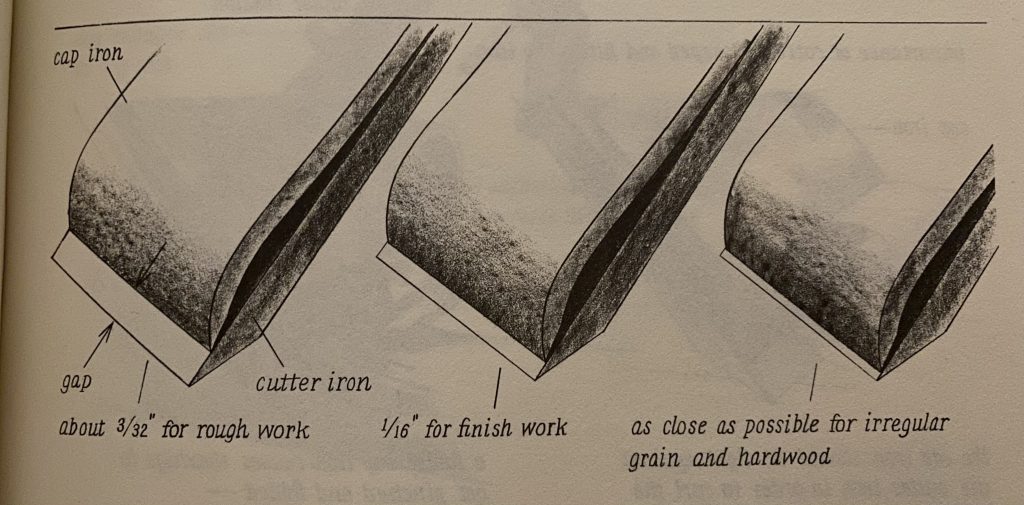
Hand tools: their ways and workings by Aldren Auld Watson. First published in 1982, which was a surprise given it was long after the heyday of hand tool use.
This book is very much aimed at beginners, and each tool is explained as if teaching a complete beginner. Because of this, the text can be very basic. Not a bad thing, but it can be a bit dull at times.
One major complaint about this book is that the information is not always as clear as it could be. For example, on the cap iron / chip breaker it says:
GAP BETWEEN CAP IRON AND CUTTER IRON
These double irons work together the cutter iron slices wood shavings, and the cap iron breaks them away and starts them up through the plane’s throat. Without a cap iron, the shavings would tend to drive back and jam against the cutter iron, a fact that was observed about 1760 when the cap iron first made its appearance. The amount of gap between the two irons should be adjusted according to how thick a slice of wood is taken, whether the wood is soft or hard, and to the degree of finish that is wanted. The thicker the slice or the deeper the cut, the wider the gap must be: a thick slice will break instead of curling. Soft wood curls out more readily than hardwood. This is a fine adjustment. Leaving a gap as big as ¼ inch, for example, would throw the cutter iron well below the plane’s bottom, and the adjusting wheel simply hasn’t enough turns to bring it back up to working level.
Hand Tools: their ways and workings
The text does not explain how the cap iron can control tear-out and suggests the purpose of the cap iron is to prevent jamming. While it may help with ejecting shavings, I have not had a problem with single-iron planes jamming. Having said that, my experience with single iron planes is limited, so it may be an issue the cap iron helps with.
There is an illustration at the bottom of the page which has some more information:

This extra information somewhat explains how to set the cap iron, but it is not in the main text and does not clearly explain the purpose of the cap iron. Although this extra information does at least mention setting it close for irregular grain. This is just one example of the information not always being clear. There are a couple of others like this in the book.
On the positive side, the book is beautifully illustrated with drawings of all the hand tools and diagrams which complement the text. It also gives good overview most common hand tools.
Overall though, I am not sure I would recommend this book. It is not that it is a bad book for beginners, it just is not a great one either. The information is quite basic, bordering on being dull, in some areas while lacking in others.
Personally, I would look for a better beginner’s book.
Overall rating: 3/5
Leave a Reply